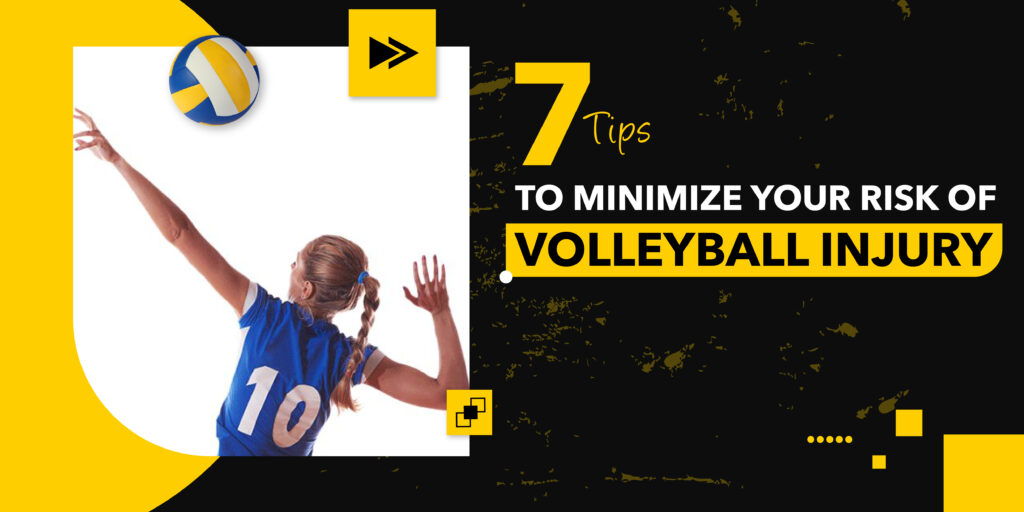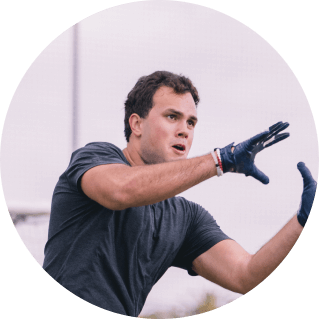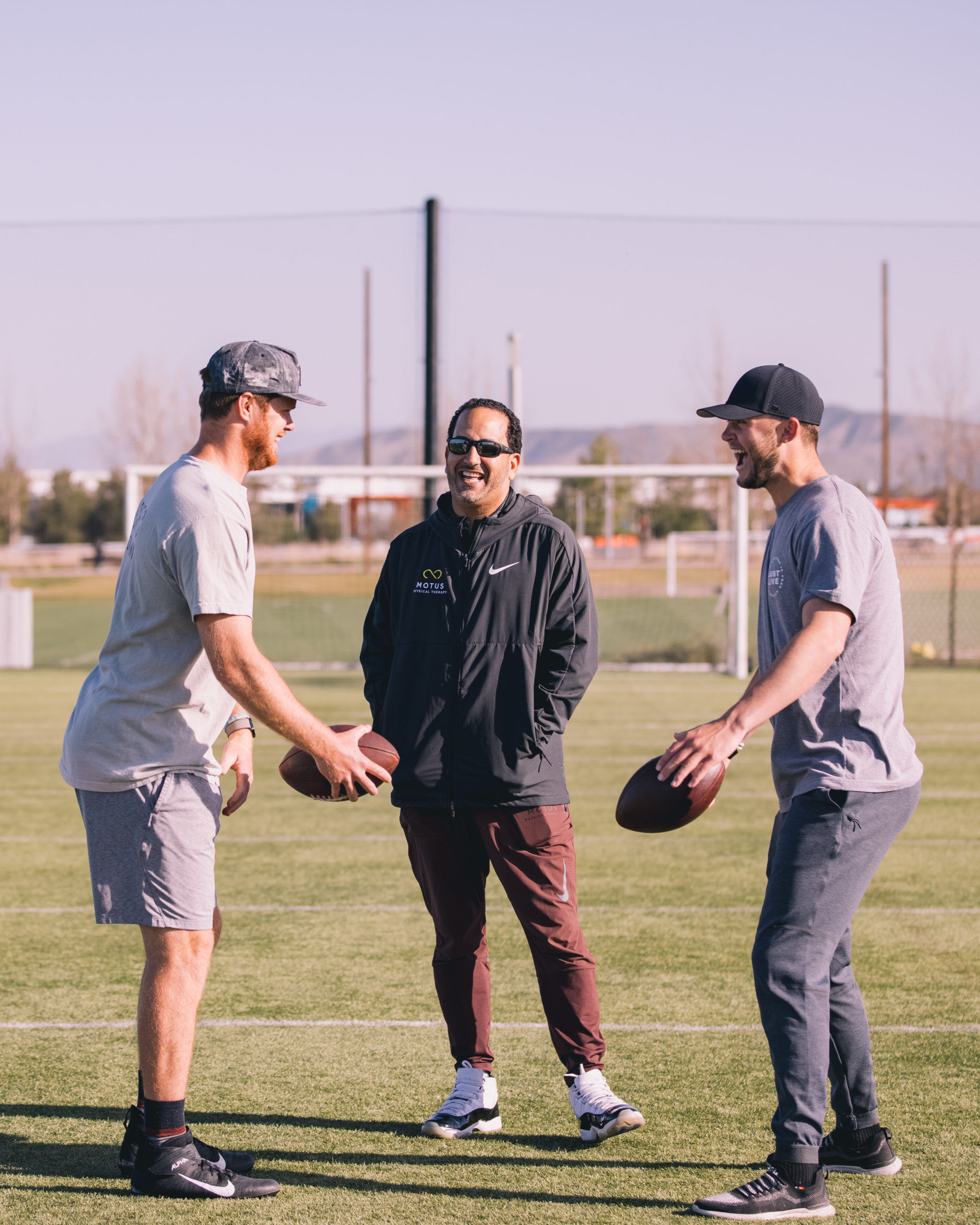
Volleyball, a sport beloved in Newport Beach, CA, and across the US, combines agility, strength, and teamwork, making it an exhilarating game for players of all levels. But here is the caveat: the physical demands of spiking, blocking, and diving bring with them the risk of a slew of injuries. Understanding how to sidestep these pitfalls is as important as mastering the serve.
In this blog post, we’re not just going to give you a ‘ballpark’ guide; we’re delving deep into practical and effective tips to help you minimize your risk of volleyball injuries.
Let’s get started.
Warm Up Properly
This tip may sound like a no-brainer, yet many fail in this. Starting with dynamic stretches, which mimic volleyball movements (such as lateral high knees, spider-man stretch, and baby knees, to name a few), help wake up your muscles and joints.
Embracing dynamic stretches increases blood flow and improves flexibility, key factors in reducing injury risk. Think of these stretches as tuning an instrument before a concert – essential for a top-notch performance.
Some believe that a warm-up routine only prepares one’s body physically. The least they know is that these exercises also sharpen one’s mental focus. Skipping this crucial step is akin to playing with fire, as it significantly increases the risk of strains and sprains.
Renowned players such as Kerri Walsh Jennings and Matt Anderson often swear by their warm-up routines, underscoring their role in longevity in the sport.
The Bottom Line: Do not skip the warm-up.
Master Correct Techniques
Some say volleyball is about power, but it’s about smart power. Mastering the correct techniques is critical to play effectively and safely. Poor form not only hampers performance but also puts undue strain on your body, undoubtedly leading to injuries. This is where professional coaching can be a game-changer, helping you refine your serving, spiking, and passing with precision.
At MOTUS, we have found time and again that improper technique is a common culprit behind many volleyball injuries. For example, learning the right way to land after a jump can prevent knee and ankle injuries.
Build Injury Resilience by Strengthening Key Muscle Groups
In volleyball, as in any sport, your body’s strength is your fortress. Focusing on key muscle groups, particularly those heavily used in volleyball, such as deltoids, quadriceps, and calves, is crucial for injury prevention.
Picture the core as your body’s powerhouse; a strong core enables better control and power in every spike and serve. Incorporating exercises like planks, squats, and shoulder presses into your routine can dramatically bolster these muscle groups. But remember, balance is key. Giving more weight to one group over another can result in imbalances and increase injury risk.
Also, don’t go all in one fell swoop; increasing the intensity and sets of these exercises with steady intervals ensures steady progress without overloading your muscles. At Motus, we understand the unique demands of volleyball and can help design a strength training program that’s not just effective but also enjoyable. Our approach ensures that you’re not just strong, you’re volleyball strong.
Need Agility Advantage? Develop Flexibility and Balance
Flexibility and balance might not be the first things that come to mind when thinking about volleyball, but they’re the silent blockers of injuries, pun intended. Improved flexibility can keep the risk of muscle and tendon (a tissue that attaches muscle to bone) injuries at bay.
Let’s talk about balance, too. Good balance reduces the likelihood of falls and awkward, injury-causing movements. Balance exercises, such as single-leg stands or yoga poses, enhance your body’s stability and reaction time – crucial for those quick, unexpected plays on the court.
Do Not Underestimate Rest and Recovery
Too much of a good thing can be bad; does that ring a bell? You may have volleyball pulsating in your veins and can’t wait to land your feet on Newport Beach sand, but adequate rest and recovery are non-skippable. Imagine a scenario where an enthusiastic beach volleyball player, eager to improve, trains intensively on a sunny Newport Beach every day without sufficient rest. This overtraining can lead to fatigue, decreased performance, and a higher risk of injury.
Never Forget Protective Gear
Better safe than sorry. Let that sink in. Appropriate protective gear, such as knee pads, are essential for volleyball players. They protect against bruises and abrasions, common in a sport with frequent diving and floor contact.
Proper footwear is another critical aspect, providing necessary support and stability and reducing the risk of ankle and foot injuries. It’s not just about having the gear but also ensuring it’s the right fit and in good condition. If possible, we advise you to go for custom footwear to elevate your performance.
Hydration and Nourishment are Your Best Friends
Dehydration can be a volleyball player’s worst enemy, considering the rapid movements and lightning-fast turns the game demands. Dehydration can lead to reduced coordination, muscle cramps, and fatigue, increasing the risk of injury.
To prevent this, athletes should maintain a disciplined hydration routine, drinking water before, during, and after play. Nutrition-wise, a balanced diet rich in essential nutrients supports muscle health and overall physical well-being.
Final Thoughts
Just like every serve, spike, and dive counts in volleyball, every measure you take to prevent injuries matters. So, take these tips, put them into play, and elevate your volleyball game to new heights.






















